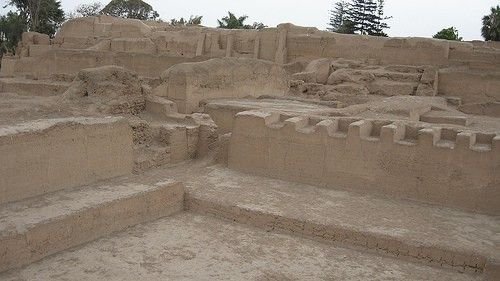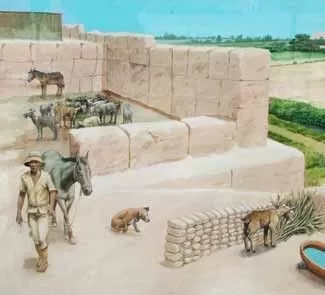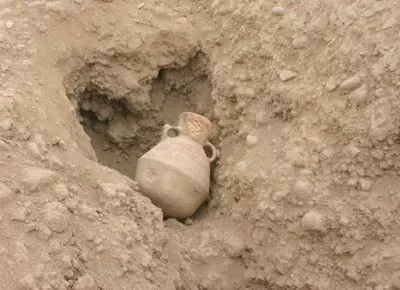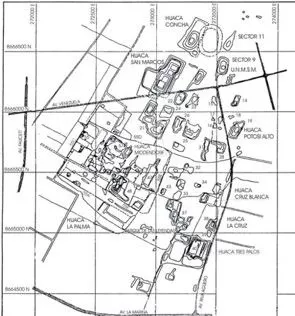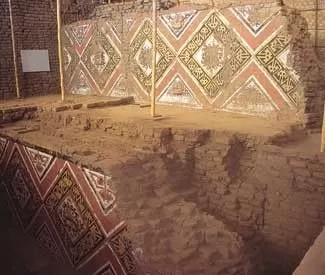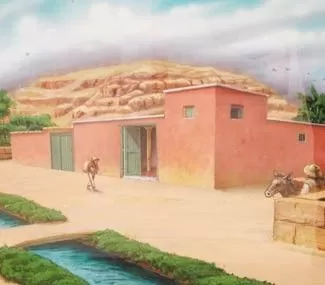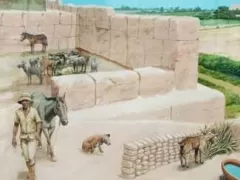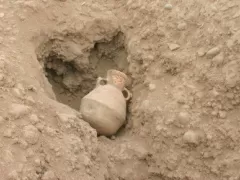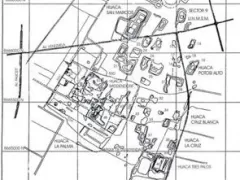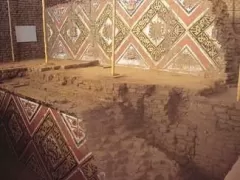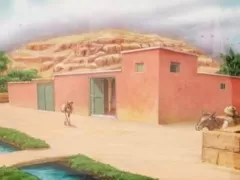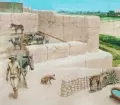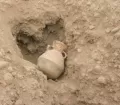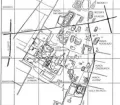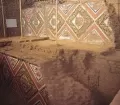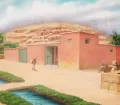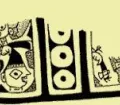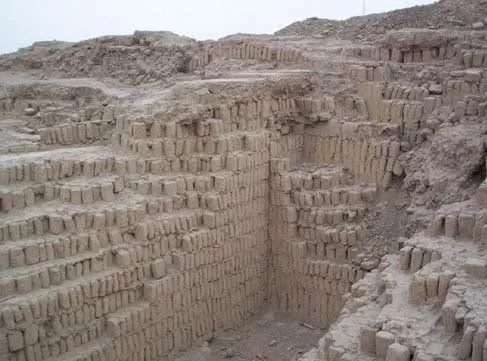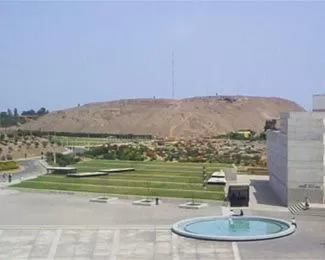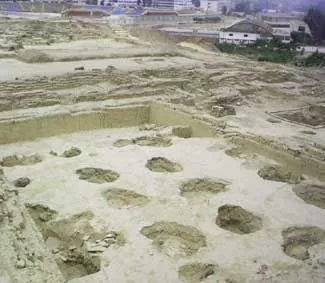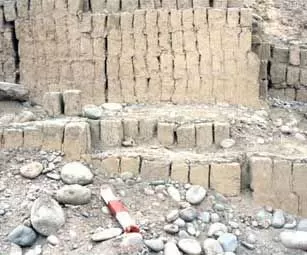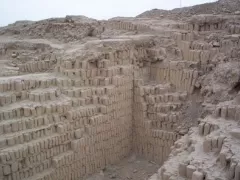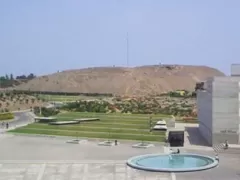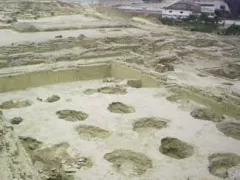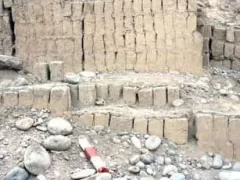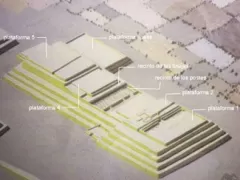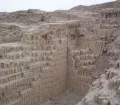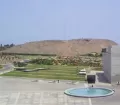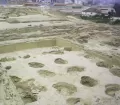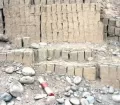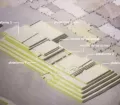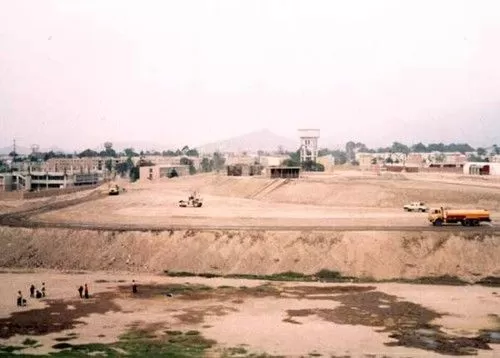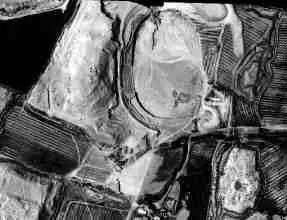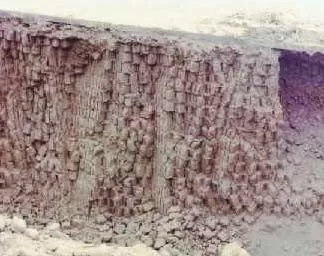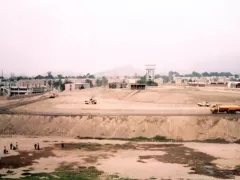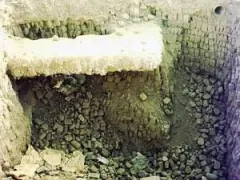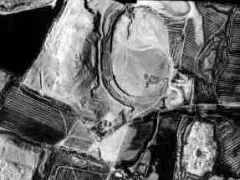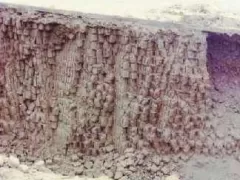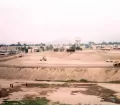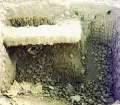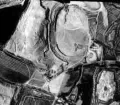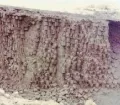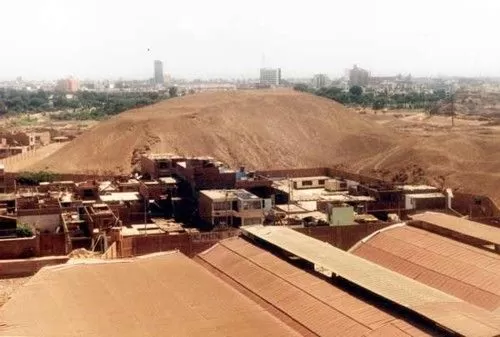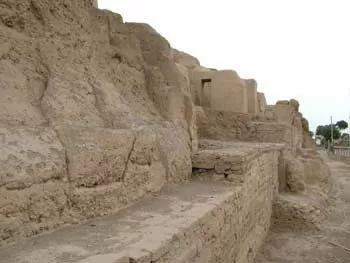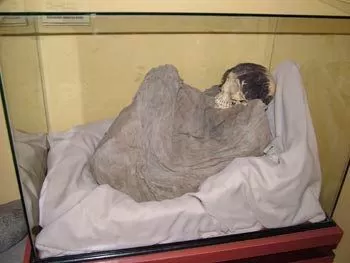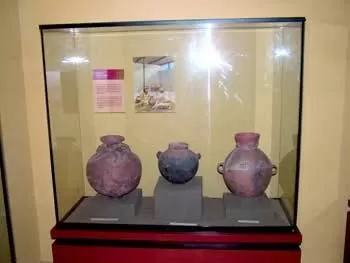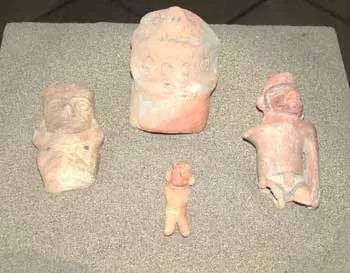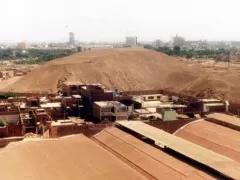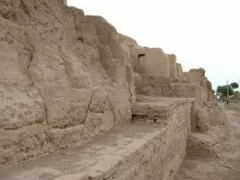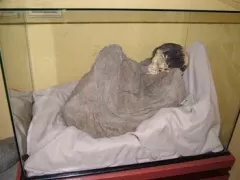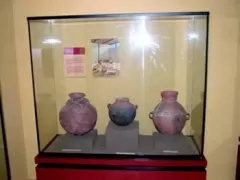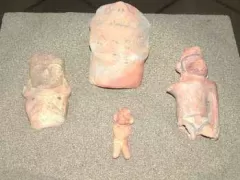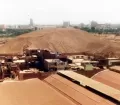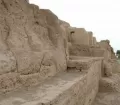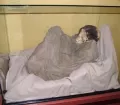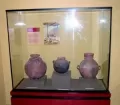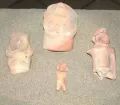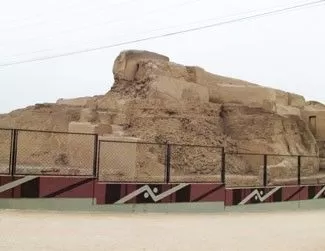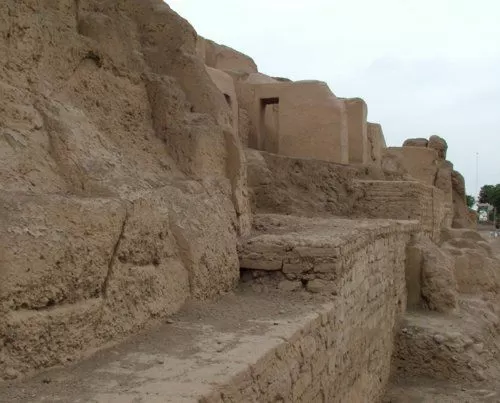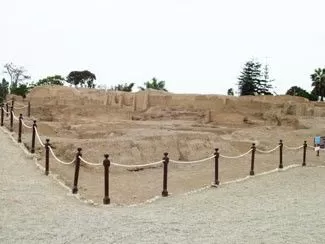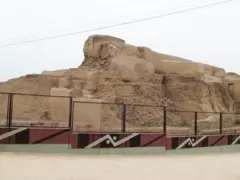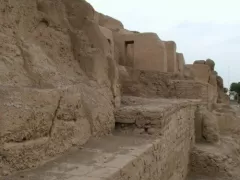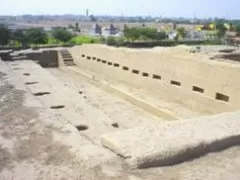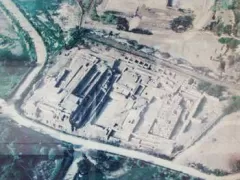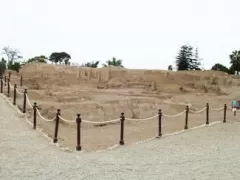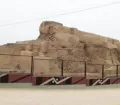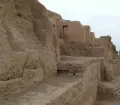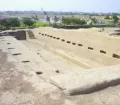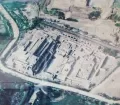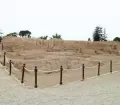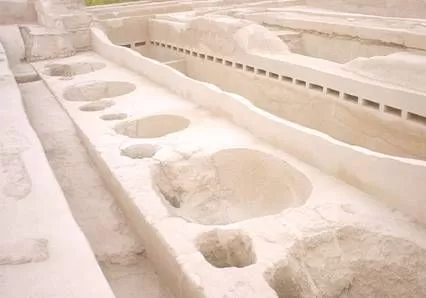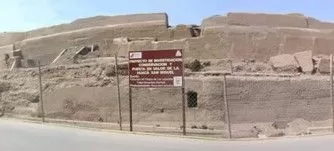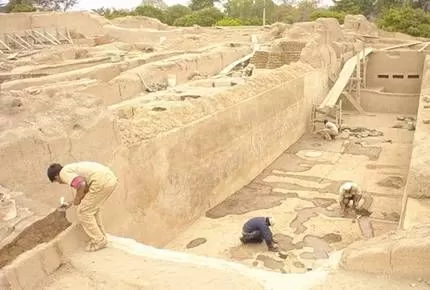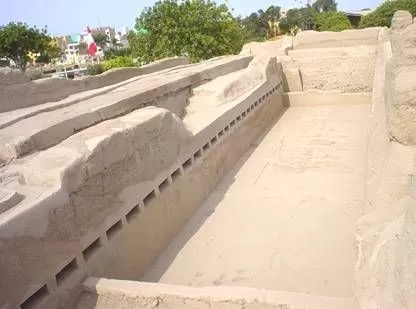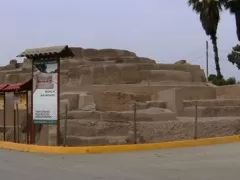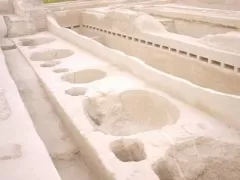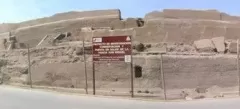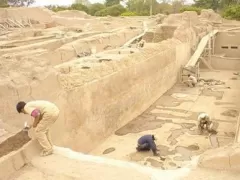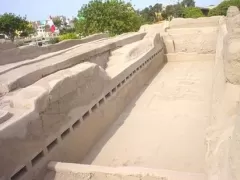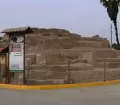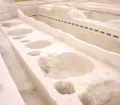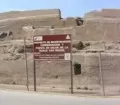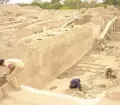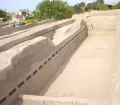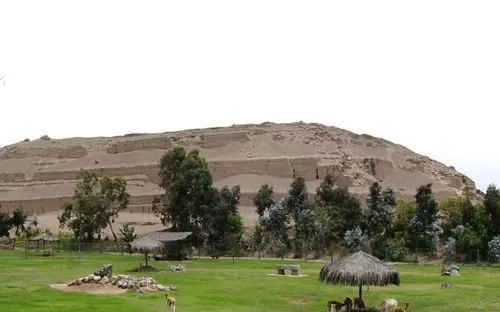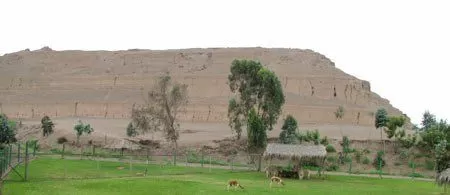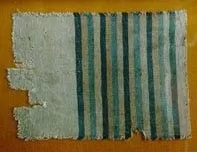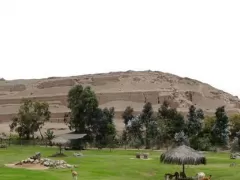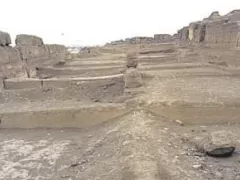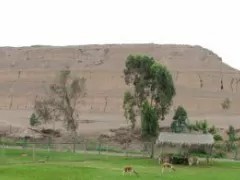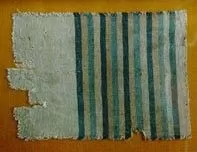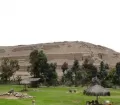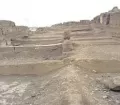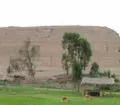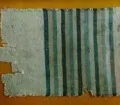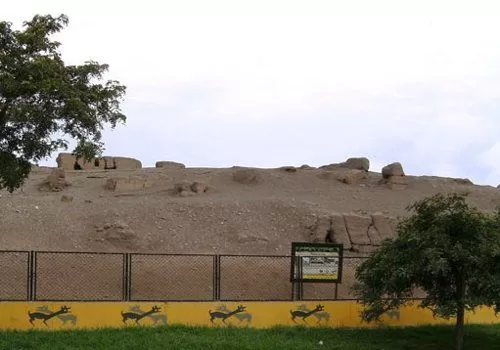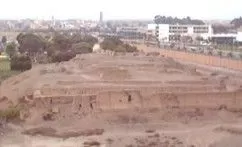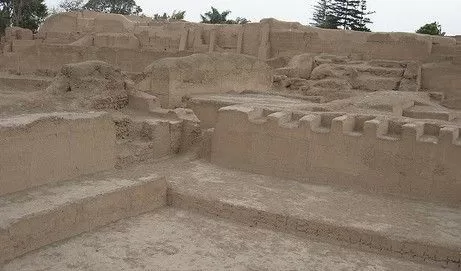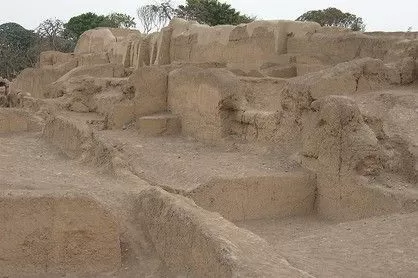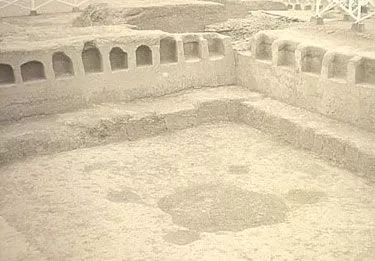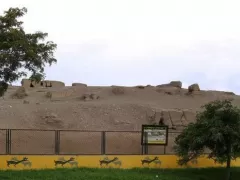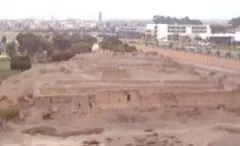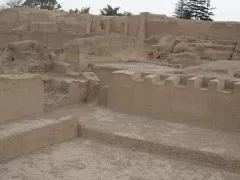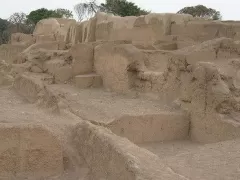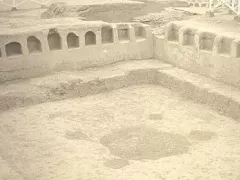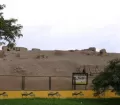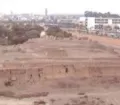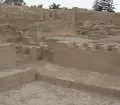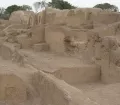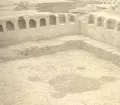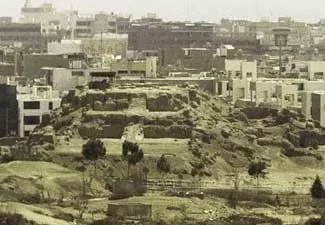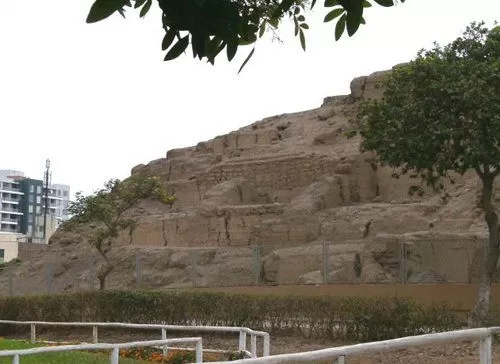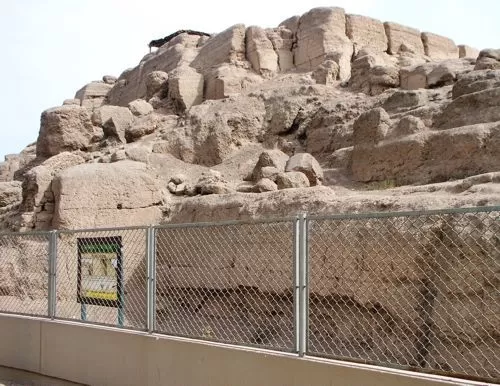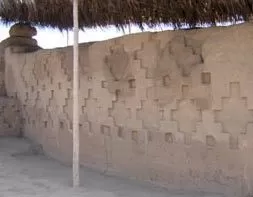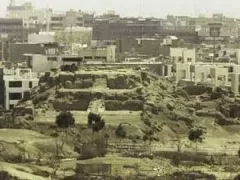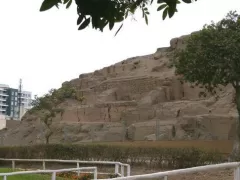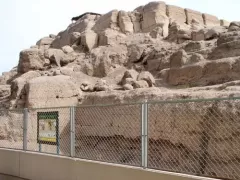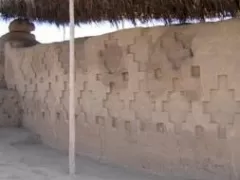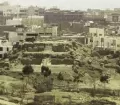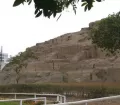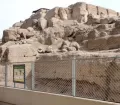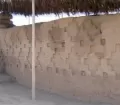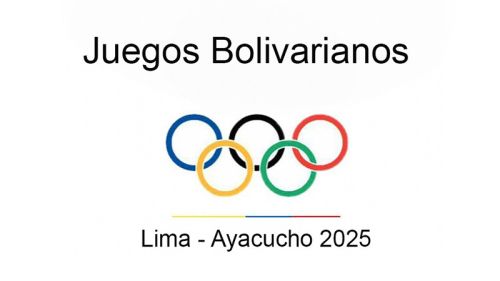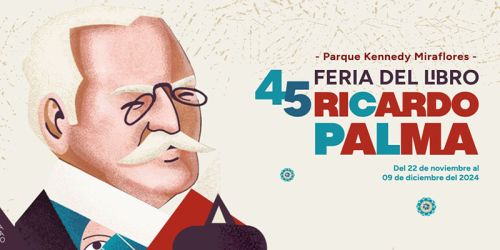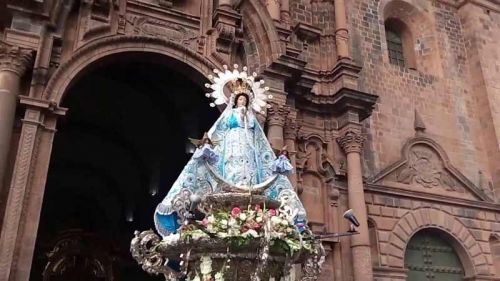The "Archaeological Complex Maranga" is located in the "Parque de las Leyendas". The park houses not only the zoo and botanical garden of Lima but as well a big part of Lima's most extensive ancient city and one of the most important pre-Hispanic complexes at the central Peruvian coast. The ancient city of Maranga contained impressive huge monuments, numerous pyramids, palaces, temples and administrative centers.
Also an ancient wall, roads, residential areas, water reservoirs and irrigation channels were part of the complex. Different cultures who occupied the area continuously from around 600 BC until the Inca period in 1532 built all. Worth mentioning are the Huaca San Marcos, Huaca Concha, Huaca Middendorf, Huaca Cruz Blanca, Huaca La Cruz, Huaca Tres Palos, Huaca San Miguel and Huaca La Palma. The small museum Ernst W. Middendorf in the Parque de las Leyendas, behind the Huaca Cruz Blanca, presents the development of the area with its different cultures and displays artifacts and mummies.
The Maranga Complex Today
The "Archaeological Complex Maranga" originally extended over today's districts of Cercado de Lima (Lima Center), Pueblo Libre and San Miguel. By the beginning of the 20th century they destroyed big parts of the once huge settlement mainly because of urban growth and neglect. Today the real dimension of the city of Maranga, its power and influence, can only be guessed. In 1960, only a small area was left and saved from further deterioration and destruction by declaring it as an archaeological reserve. To preserve and investigate this area and to show Limeños and all Peruvians the rich natural wealth of Peru and its impressive archaeological patrimony, parts of the ancient city of Maranga were integrated in the "Parque de las Leyendas" established in 1964.
In October 2003, they declared this extensive archaeological zone a cultural patrimony of the Nation. Other historical monuments belonging to the ancient Maranga like the "Huaca San Marcos", "Huaca Concha" and "Huaca Potosi Alto" are located outside the "Parque de las Leyendas" on the campus of the University of San Marcos, the Naval Hospital, adjacent urban areas and on the campus of the Pontifical Catholic University of Peru.
Maranga - The Seven Great Cultures
Investigations conducted in Maranga established that the urban center was occupied by seven great cultures in seven phases:
- Maranga I, Colina Tradition (approximately 800 to 200 BC)
We know very little about the first development and the base of the later so extensive "City of Maranga". The first huacas like the "Huerto Santa Rosa", "Feria del Pacífico", "Juan XXIII" and "Corpus II" were built.
- Maranga II, "Blanco sobre Rojo Tradition" (200 BC to 150 AD)
During the "Blanco sobre Rojo Tradition" huacas built by the "Colina" were replaced by new ones built with "adobitos" (small adobe bricks). Examples for this period are the "Huaca Middendorf" and the "Huaca San Marcos"
- Maranga III , Lima Tradition (150 AD to 450 AD)
During this period the pyramids grew. Cubical adobe bricks were used as construction material and they extended the existing huacas with platforms, enclosures and passages. Walls were plastered and painted yellow. We can find this architectural style in the "Huaca Middendorf", the "Huaca San Marcos", the "Huaca Concha" and the "Huaca Potosi Alto".
- Maranga IV, Lima and Nievería Tradition (450 AD to 650 AD)
This period is characterized by the overall growth of the complex and a sophisticated urban establishment of the site. The "Huaca San Marcos", "Huaca Middendorf" and "Huaca Concha" were extended, upwards and to the sides and additional smaller huacas built. Huge open spaces and places surrounded the centers.
- Maranga V, Pachacamac and Nievería Tradition (650 AD to 750 AD)
The City of Maranga experienced in this period a time of frequent architectonic changes. Many pyramids were reconstructed and reshaped using big adobe bricks. By the end, they abandoned Maranga.
- Maranga VI, Ichma Tradition ( 900 AD to 1476 AD)
After a long time of abandonment, Maranga was newly occupied by the "Ichma". During this period they remodeled old constructions. Additionally, the city grew to the south (today's "Parque de las Leyendas"). New monuments like the "Huaca Tres Palos", "Huaca La Cruz" and "Huaca Cruz Blanca" were built.
- Maranga VII, Inca Tradition (1476 AD to 1532 AD)
When the Incas arrived at the central Peruvian coast, they occupied Maranga as well. The entire complex was "modernized". The "Ichma" pyramids were reconstructed and used as storage facilities or cemeteries, walls plastered and the access roads "paved". New huacas like the "Huaca La Palma" were built. Old buildings of the Maranga in the north were reoccupied by farmers who constructed very basic houses with the old "adobitos" of the Lima Culture. After the Spanish conquest, they finally abandoned the amazing City of Maranga.
Huaca San Marcos
The "Huaca San Marcos" was built during the time of the Lima Culture. Together with the "Huaca Concha" and "Huaca Middendorf" it formed the first real ceremonial and administrative complex in the City of Maranga. Today it is in the University's compound of San Marcos and covers an area of over 62.000m². The central part with its five platforms and three adjacent parts is built mainly with "adobitos" (small adobe bricks). Only a few mud walls were discovered.
Inside the huaca archaeologist excavated many mummy bundles, remains of vegetables, bones, remains of fish, ceramics from different cultures and amazing ancient drawings. Unfortunately, the monument and his historical value were badly damaged because of the urban growth and the expansion of the University of San Marcos. At least "Huaca San Marcos" still exists. Today the base of the pyramid is 332m x 137m.
Huaca Concha
The "Huaca Concha", on the premises of the University of San Marcos, was one of the highest pyramids of the Lima Culture in the ancient City of Maranga. Together with "Huaca San Marcos" and "Huaca Middendorf" it formed the first real ceremonial and administrative complex in Maranga.
In the 20th century the expansion of the University ended up with the construction of a football stadium literally on top of the "Huaca Concha" (after demolishing and flattening the peak of the pyramid). This nearly destroyed the highly valuable and important historical complex. Even the discovery of significant archaeological objects during and after the construction phase did not stop renovation works of the stadium in the 90s with even more damages done to the few remains of the "Huaca Concha".
Huaca Middendorf (Huaca 21)
The "Huaca Middendorf", named after Ernst Wilhelm Middendorf, the great German doctor and pioneer known for his archaeological investigations in Peru, is in the northern part of today's "Parque de las Leyendas" close to the compound of University San Marcos. Together with the "Huaca San Marcos" and "Huaca Concha" it formed the first real ceremonial and administrative complex within the ancient City of Maranga. The huge pyramid was built during the Lima Culture mainly out of "adobitos" (small adobe bricks). The complex is formed by two sections, "Hill A" and "Hill B". "Hill A" is the higher one in the south and has four platforms.
Archaeologist found yellow painted floors and abobe bricks. "Hill B", the smaller one, has at least two platforms and was presumably used as a cemetery. Only a few investigations of the huaca have been conducted, but the whole structure has been stabilized to protect it from further deterioration. Hopefully, studies will continue and this historical and archaeological monument will be restored.
Huaca Cruz Blanca (Huaca 36)
The "Huaca Cruz Blanca" was an important administration and ceremonial center for the "Curacazgo of Maranga". It was used in the period of regional chiefs and señoríos (1100 – 1450) and during the Inca time (1450 – 1532 AD).The complex, located in the "Parque de las Leyendas" has a rectangular shape and is divided into two sectors. The Huaca Cruz Blanca is built mainly using mud walls and contains many platforms, stairs, ways and wide enclosures with squares, open spaces and niches.
In 1992 and 1993 the higher part was conserved and reconstructed, in 2003, the lower part. The archaeological site is open to the public and worth a closer look. Make the interesting tour through the huaca and discover the ancient life for yourself.
Huaca San Miguel (Huaca 37)
Intensive studies, investigations and preservations of the "Huaca San Miguel" (Parque de las Leyendas) in the years 2003 and 2004 revealed an impressive building constructed in the late intermediate period (1100 to 1450). Further studies and restorations in 2006 led to the assumption that the "Huaca San Miguel" originally was an important administrative centre of the "Ichma" Culture. They built the monument with mud walls. Impressive are the huge enclosures with sidewalks, the elegant plastering of the floors and walls, and huge stairs of 5.4m length and 1.70m width.
At one time the "Huaca San Miguel" was abandoned by its population and reoccupied most probably between the 13th century and the beginning of the Inca era. They added huge enclosures and silos to store agricultural products. At the end of this "reoccupation" period, they also used the complex as a burial ground. The archaeologists found a 30 to 40-year-old tattooed man (El Personaje Tatuado), a 25 to 30-year-old woman (La Dama de los Batanes - the Lady of the walk-mill) and a mummy bundle containing an infant. The archaeological investigations, the conservation and the reconstruction of the "Huaca San Miguel" are still ongoing.
Huaca Tres Palos (Huaca 40)
The "Huaca Tres Palos" or also known as "Huaca Pando" or "Huaca La Campana" was inhabited during the period of regional chiefs and señoríos (1100 – 1450), in the Inca era (1450 – 1532 AD) and at the beginning of colonial times. The rectangular shaped pyramid, in the "Parque de las Leyendas", is constructed by four platforms. The mud walls were plastered and painted in white, yellow and red.
Originally the monument was used as temple and an observatory. On the highest platform are 96 wells and archaeologist indicated, that they might have been used as a solar clock and calendar to efficiently perform agriculture and fishing.
Huaca La Cruz (Huaca 38)
In the Parque de las Leyendas the "Huaca La Cruz" was like the "Huaca Tres Palos" built during the period of regional chiefs and señoríos (1100 – 1450). We assume that they used this rectangular monument built with mud walls as an administrative center of the "Curacazgo" (reign) of Maranga.
Unfortunately, only little is known about the Huaca La Cruz, but investigations of this complex are still ongoing.
Huaca La Palma (Huaca 48)
The "Huaca La Palma" (Parque de las Leyendas), was the principal building of the city of Maranga during Inca times. Unfortunately, this monument built of adobe bricks and mud walls is quite deteriorated. The pyramid contains three platforms connected with two ramps. The base is surrounded by sidewalks and walls with small niches.
The "Huaca La Palma" is one of the few historical sites in the Lima area where archaeologist could discover and save amazing friezes ("frieze" = a band of decoration running along the wall). In 2001, the unique friezes of the "Aves Piquero" and of the "Cruces Escalonadas" were preserved and restored.


